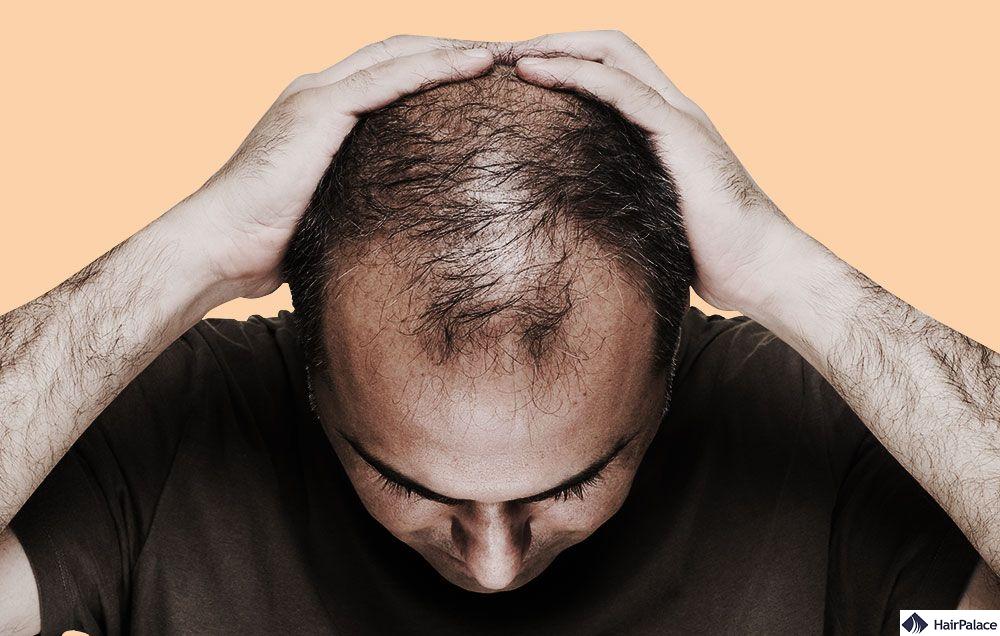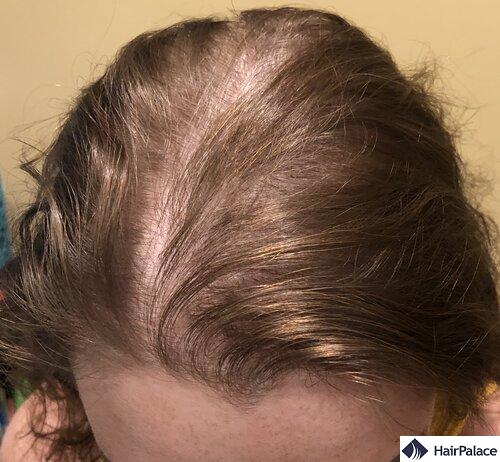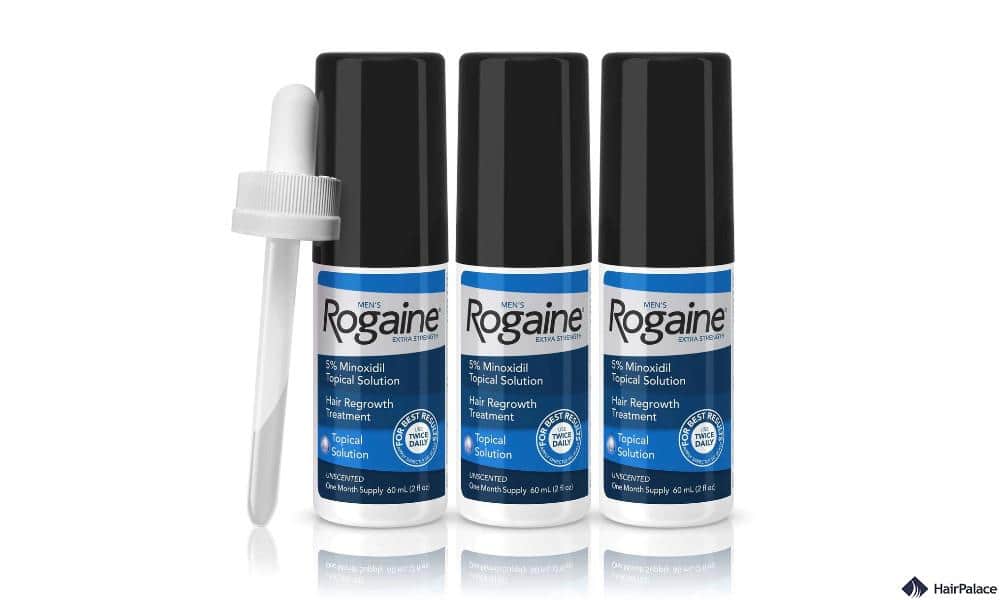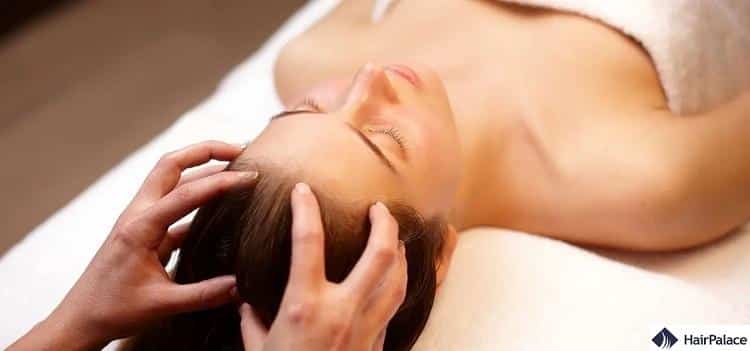Thinning Hair: Causes, Signs, Treatments, Prevention

Thinning hair refers to a gradual reduction in hair density, which can be caused by factors such as genetics, hormonal changes, nutritional deficiencies, stress, or underlying medical conditions.
It often manifests as a wider part, less volume, and more visible scalp.
This article will explore everything you need to know about slow hair loss.
We’ll highlight the most common causes of the problem and the exact signs and symptoms you need to be mindful of.
We’ll also share several therapies and treatments that you should consider and help you determine whether your thinning hair is a cause for concern or not.
What causes hair thinning?

There are a variety of causes for thinning hair, so it’s important to spend time identifying potential triggers in your life and making the appropriate changes.
Below is a list of common causes of temporary hair loss you should be mindful of:
Lifestyle causes:
- Stress: High-stress levels and experiencing physical or emotional shock can release harmful hormones that can negatively affect hair growth.
- Nutrient deficiencies: Hair loss occurs if your diet lacks specific vitamins and minerals.
- Harsh chemicals: Using excessive colouring, perms, hair gels or bleaching can turn healthy hair into brittle hair over time.
- Style choices: Wearing tight hairstyles, like cornrows or braids, can stress hair strands and lead to damage.
- Seasonal hair loss: Some people may notice increased hair shedding with the changing of the seasons due to increased stress and decreased sun exposure.
Medical causes:
- Genetics: Hereditary conditions like male pattern baldness can make people more susceptible to lose hair.
- Hormonal changes: If you have a hormonal imbalance, e.g., during pregnancy or menopause, this can negatively affect hair.
- Major life events: If something significant has suddenly happened, such as dramatic weight loss, surgery, or injury, your hair may become thin.
- Medication: Certain medications, like birth control, may lead to thinning.
- Medical conditions: Autoimmune conditions like alopecia areata, and physiological conditions like traction alopecia, can damage healthy hair follicles, in which hair thins.
First signs of hair thinning
There are different signs of hair thinning for both men and women.
- For men: Hair thinning in men usually starts with a receding hairline and concentrated hair loss at the crown.
- For women: an obvious sign of thinning is your hair par widening and gradual thinning across the top of the scalp.
5 Possible Treatments for Thinning Hair
Below are five of the most common treatments used for thinning hair:
1. Minoxidil

Commonly sold under the brand name Rogaine, it has an excellent reputation across the medical industry and is approved by the American Food and Drug Administration (FDA) for male and female pattern hair loss.
It comes in two doses, 2% and 5%, which you apply directly to affected areas. It might take between six and twelve months to produce noticeable results.
2. Finasteride

Another popular medication is finasteride, which is often sold under the brand Propecia.
It is an oral medication that stimulates hair growth and usually comes in 1-milligram doses.
3. Spironolactone
Because it has anti-androgen properties, spironolactone can be an effective hair loss treatment in specific cases.
Androgens are sex hormones that can cause all manner of problems with hair growth.
This makes spironolactone an incredibly effective drug for women experiencing hormonal changes.
The drug is often sold under Aldactone and comes in topical and oral solutions.
4. Corticosteroids
Corticosteroids are steroid hormones that are primarily used as anti-inflammatories.
But depending on your underlying conditions, they can also grant relief and support to hair follicles.
They do this by reducing swelling, allowing hair follicles to receive a healthy supply of nutrients and oxygen.
5. Hair Transplant
Hair transplant thinning hair treatment offers a permanent solution to your hair problems.
It is especially effective at correcting receding hairlines, bald spots and patchy hair loss.
The result is a completely new head of hair, just take a look at our before and after gallery to see the stunning transformation our patients go through.
However, if you’re losing your hair due to a rare condition called retrograde alopecia, this may not be an option for you.
8 Alternative Remedies for Thinning Hair
Depending on the severity of your thinning, you may be able to correct it or at least alleviate symptoms in the comfort of your own home.
Alternative treatments include:
1. Scalp massage

Physical therapies like scalp massages are one of the most effective ways to improve the condition of your thinning hair and de-stress from everyday life.
Simply wash your hair, and apply gentle pressure to your scalp with your fingertips.
Move your fingertips in a circular motion across your entire scalp for five minutes daily to gradually improve scalp circulation.
You don’t need to invest in expensive equipment, though particular handheld scalp massagers can also help remove dead skill in between hair.
2. Essential oils

Simply put, essential oils are highly concentrated plant extracts with various mixtures, combinations, aromas, and medical benefits.
Many have been celebrated as being particularly helpful in stimulating hair growth.
Lavender oil, for example, is a popular treatment for androgenetic alopecia.
It is said to be a natural way to reduce the number of harmful hormones, like dihydrotestosterone, in your system.
3. Shampoos for thinning hair
Nowadays, a variety of hair loss shampoos claim to help add volume and thickness to thinning hair.
They can be an easy, inexpensive method to treat as part of your daily haircare routine.
These shampoos have been specially designed to contain a rich assortment of essential vitamins and minerals, all of which are proven to help promote hair growth and improve your scalp’s general health.
4. Improve your diet
Vitamins and minerals are like the building blocks for a healthy body.
They are crucial for your hair’s quality (and quantity!).
And while having higher levels won’t necessarily cure baldness, having low levels most certainly can contribute to the problem.
Pay particular attention to foods rich in iron, zinc, and folic acid, as these will most affect your hair’s thickness and strength.
That said, always consult your doctor if you are unsure about your diet.
They can conduct a simple blood test to see what you are lacking.
5. Folic acid supplements
As a B Vitamin, folic acid is one of the most popular supplements people take to help improve their hair.
Folic acid is key in producing red blood cells and promoting healthy cell growth and functions.
That said, more research is needed to say conclusively if folic acids can make a massive difference for you or not.
6. Biotin
Also known as B7, biotin is an essential vitamin that helps promote healthy cell metabolism, as well as helps strengthen both hair and nails.
It is a common ingredient in countless hair care treatments.
Many people take biotin supplements, thinking they can help directly with their hair problems. But we ask you to consider what you eat already.
A balanced diet often includes all the vitamin B7 you need, and a supplement may be pointless.
7. Omega-3 and omega-6 fatty acids
Despite their name, certain fatty acids are hugely important to a healthy body and potentially combat hair loss.
Omega-3 and Omega-6 are essential because they cannot be produced inside our body – we must consume them in our diet to reap their benefits.
Omega-3 has anti-inflammatory properties that can help reduce swelling in the body, helping nourish our hair follicles. It is commonly found in fish and seeds.
Omega-6 is pivotal in keeping our skin and scalp healthy and can be found in plant-based oils.
As with any major diet changes, you should consult your doctor for advice and recommendations.
8. At-home laser therapy
Although laser therapies can be expensive, there are several devices you can buy and use at home that can potentially have the same effects.
Devices range from laser combs to helmets and lamps.
They work by exposing your follicles to light, which energizes them. You may have to use these devices regularly over several months to benefit.
As with any significant healthcare investment, you should consult your doctor or dermatologist before buying laser tools to see if they can be effective for your hair loss.
How to stop hair thinning in male patients – 4 Tips
Losing hair can often make us feel helpless. But there are some things you can do to improve your situation.
Even with conditions like male pattern baldness and alopecia areata, treating the underlying medical condition and improving your lifestyle can be highly effective.
Try the following simple tips to prevent thinning hair:
1. Eat a balanced diet
Your body requires various vitamins and minerals to grow, repair, and defend itself.
It is one of the critical areas you should focus on to help support and improve your hair’s condition.
If your diffuse thinning results from a poor diet, you should focus on increasing your protein and iron intake and eating foods rich in B Vitamins to recover.
However, you should be selective with dietary supplements as certain things such as creatine may amplify your shedding.
Your doctor or dietitian can suggest an appropriate diet plan for you to follow, including beneficial supplements, that could reduce your hair loss problems.
2. Quit smoking and alcohol
Bad lifestyle habits, such as excessive smoking and drinking, can negatively affect your body, especially your hair.
This is because both have an inflammatory effect throughout the body.
This means that your blood flow is reduced, and hair follicles may not receive all the nourishment and oxygen they need to grow optimally.
The good news is that by stopping excessive smoking and drinking, your body will recover over time, and hair loss can be reversed.
3. Manage and reduce stress levels
Stress can dramatically affect several parts of the body, including your hair.
This is because intense physical or emotional stress triggers harmful hormones to be released.
These can push follicles into an early resting phase, resulting in temporary hair loss.
If you’ve recently experienced intense stress, you must learn to relax and look after yourself.
Managing stress can be done in various ways, including meditation, mindfulness, starting a new hobby, or simple exercises to clear your mind.
If stress is prolonged, you may seek professional help, including your doctor or a therapist.
They will have advice on how to manage stress levels better.
4. Take better care of your hair
Sometimes, thinning hair can be a direct result of inadequate hair care.
This type of hair loss relates to using too many heat-styling devices like curling irons, hair straighteners, and hair dryers.
Limit their use, or operate them at the lowest setting possible.
You might also be combing or brushing your hair too much.
This might be causing too much physical stress on hair strands, and they fall out as a result.
Avoid harsh chemicals, treatments, and dyes on already-vulnerable hair, too.
Instead, opt for gentle shampoos and conditioners to see a noticeable texture, thickness, and appearance improvement.
That said, if you’re suffering from a genetic condition, like male and female pattern hair loss, it won’t matter how well you treat your hair – it will gradually thin and fall out.
4 Tips to cover thinning hair
If you’re experiencing thinning areas, there are some easy and practical ways to hide or minimize their appearance. These include:
1. Wearing a wig or toupee
Both wigs and hairpieces are quick and easy ways to cover widespread gradual thinning on top of the head.
They come in various styles, colours, and textures, ensuring you can find a match for your natural hair.
2. Use hair fibre sprays
Hair fibre sprays match your natural hair colour and can drastically add volume and density to your hair, masking the prevalence of thinning.
3. Wear a crown weave
A crown weave is a hairpiece that sits on the crown of your head. It is especially effective at covering thinning hair centred in this area.
Your hairstylist or barber can help you source a suitable weave.
4. Vary your hairstyle
Especially with minor or gradual thinning, you can switch up your hairstyle to cover thinning.
This can be anything from combing over hair, slicking it back, to cutting it short to help reduce obvious thinning.
Thinning Hair FAQ
While there are many types of hair loss, some of the most common include lifestyle choices like a poor diet, underlying medical conditions, side effects of medication, as well as big life events.
These events can range from dramatic weight loss, giving birth, hormonal changes brought on by pregnancy and menopause, and extreme and prolonged periods of stress.
Finally, how you are styling your hair could cause thinning. Wearing tight hairstyles like cornrows, braids, and tight ponytails can also lead to significant thinning when worn repeatedly.
Whether thinning hair grows back or not ultimately depends on its root cause. For example, once contributing factors like a poor diet, extreme stress, and hormonal changes (like pregnancy) end, hair may regrow like before.
That said, natural regrowth may be slow or impossible if genetics is the primary cause of your thinning hair. We recommend you visit your doctor to establish or eliminate the causes of your condition.
There are many different reasons why hair might seem thinner than usual.
These include experiencing stress, taking certain medications (like birth control), hormone changes, or developing an underlying condition. Certain autoimmune disorders, like alopecia areata, may also cause hair thinning when they flare up.
Hair can become thin either gradually or quite suddenly. One of the most common reasons for gradual hair thinning is simply growing older. As we age, our hair can change, becoming smaller and growing slower.
On the other hand, sudden hair thinning can directly result from something in your life, including cancer treatment, infections, stress, autoimmune conditions flaring up, and hormonal changes (like pregnancy or menopause).
While gradual thinning is a natural phenomenon, sudden hair loss can cause concern, especially if unsure of its root cause. Furthermore, you must seek a formal diagnosis before too much hair falls out, as early treatment will prevent extensive hair.
Every person is unique; what works for someone may not be that effective for you – and vice versa. The type of shampoo you should use is highly dependent on the reason for your hair thinning.
Some shampoo brands will help with thinning, while others focus on hair loss, texture, and density. If your hair loss is extensive and severe, your doctor may prescribe you a specially formulated shampoo tailored to your needs.
To regrow thinning hair in females, consider these steps:
-Consult a dermatologist or healthcare professional to identify the underlying cause.
-Use FDA-approved hair loss treatments like minoxidil or talk to your doctor about other options.
-Maintain a healthy lifestyle with a balanced diet, exercise, and stress management.
-Avoid excessive heat styling and tight hairstyles that can damage hair.
-Consider low-level laser therapy (LLLT) devices or supplements like biotin and saw palmetto after consulting with a healthcare professional.
To stop hair thinning you should identify and address the underlying cause, such as hormonal imbalances or nutritional deficiencies. Use hair care products that promote thickness and avoid excessive heat styling or tight hairstyles. Try to maintain a healthy lifestyle with a balanced diet and stress management. Consult a healthcare professional or dermatologist for personalized advice.
Hair thinning can be caused by factors like stress, poor nutrition, or hormonal changes while balding (pattern hair loss) is typically genetic and progressive.
Bleaching weakens the hair shaft, making it more prone to breakage, which can create the appearance of thinner hair, but it doesn’t affect hair growth at the root.
Last medically reviewed on January 29th, 2025
- Paus R, Olsen EA, et al. “Hair growth disorders.” In: Wolff K, Goldsmith LA, et al. Fitzpatrick’s Dermatology in General Medicine (seventh edition). McGraw Hill Medical, New York, 2008:753-74.
- American Academy of Dermatology Association. Thinning hair and hair loss: Could it be female pattern hair loss?https://www.aad.org/public/skin-hair-nails/hair-care/female-pattern-hair-loss
- Jimenez JJ, Wikramanayake TC, Bergfeld W, et al. Efficacy and safety of a low-level laser device in the treatment of male and female pattern hair loss: a multicenter, randomized, sham device-controlled, double-blind study.https://pubmed.ncbi.nlm.nih.gov/24474647
- Do you have hair loss or hair shedding? (n.d.).https://www.aad.org/public/skin-hair-nails/hair-care/hair-loss-vs-hair-shedding
- Thinning hair and hair loss: Could it be female pattern hair loss? (n.d.).https://www.aad.org/public/skin-hair-nails/hair-care/female-pattern-hair-loss
- Hair loss: Tips for managing. (n.d.).https://www.aad.org/public/diseases/hair-loss/treatment/tips


